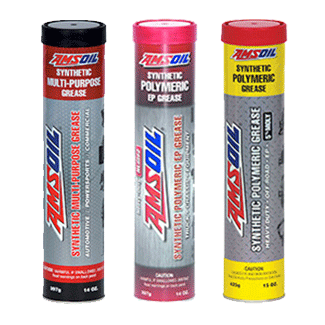Grease is a thick, cohesive substance used to lubricate moving parts and is designed to remain in place, even under high pressure and temperature. This makes it ideal for use in the many different bearings, joints and other mechanical components found in motor vehicles.
One of the primary functions of grease is to reduce friction and wear on moving parts by creating a thin film between the surfaces of two parts that are in contact with each other. This durable film helps to reduce the amount of heat that is generated by the friction of those parts, which can help extend the life of the component.
In addition to reducing friction, grease can also help protect against corrosion by providing a barrier between the metal parts and the environment. This helps prevent rust and other forms of corrosion from forming on the parts and can help extend the overall lifespan of the vehicle.
There are several different types of grease, each formulated to meet the specific needs of different applications. Some greases are designed for use in wheel bearings, while others are better suited for use in universal or ball joints. Some greases are also formulated to withstand extreme temperatures, making them suitable for use in engines and other high-heat environments.
It is important to use the correct type of grease for each application, as using the wrong type of grease can cause problems. For example, using grease that is not designed for high temperatures can cause it to break down or become too thin, which can lead to increased wear on the component. Similarly, using a grease that is too thick can make it difficult for the moving parts to operate smoothly.
Check the owner’s manual to determine the recommended type of grease for each application. This will ensure that you are using the correct grease and that you are applying it in the proper amount. Also check the level of the grease in the various components of your vehicle on a regular basis to ensure it is at the correct level.

Grease components
Grease is comprised of different combinations of base fluids, thickeners, complexing structure modifiers and performance additives that give the final product its special lubricating properties.
Many different types of base oil may be used in the manufacture of grease, including petroleum (naphthenic, paraffinic) and synthetic (PAOs, esters, silicones, glycols). Just as with motor oils and transmission fluids, the viscosity of the base oil is the most significant property. A lighter, lower-viscosity base oil is used to formulate low-temperature greases, while a heavier, higher-viscosity base oil is used to formulate high-temperature greases.
Organic or inorganic thickeners are added to the base oil to thicken it to an appropriate grease consistency. Organic thickeners can be either soap-based or non-soap-based, while all inorganic thickeners are non-soap-based.
Simple soaps are formed through a process known as saponification, where a fatty acid or ester (of either animal or vegetable origin) is combined with an alkali or alkaline earth metal and reacted with the application of heat, pressure or agitation. The fiber structure provided by the metal soap determines the mechanical stability and physical properties of the finished grease.
To enhance the grease’s performance characteristics, including dropping point and load-carrying ability, a complexing agent may be added to the soap thickener to convert it to a soap-salt complex thickener. Greases formulated with soap-salt complex thickeners are referred to as “complexes” and include lithium complex and calcium-sulfonate complex greases.
Additives such as extreme-pressure, anti-wear and friction-reducing agents are added to the grease to enhance performance, much like the additives in lubricating oils. Performance requirements, compatibility, environmental considerations, color and cost all factor into additive selection.

Grease properties
Greases are classified into nine consistency grades (000, 00, 0, 1, 2, 3, 4, 5, 6) established by the National Lubrication and Grease Institute (NLGI). NLGI #000 greases are nearly fluid, while NLGI #6 greases are nearly solid.
Softer grades are often used for improved pumpability or low-temperature service, while harder grades are used where leakage or sealing are bigger concerns. NLGI #2 is the most widespread classification and is used in many automotive and heavy-duty applications, such as ball joints and other suspension components. Chances are you’ve used an NLGI #2 grease before.
The Cone Penetration Test (ASTM D217) measures grease consistency. Under prescribed conditions, a standardized cone is allowed to drop into the grease for five seconds and the level of penetration is measured (in tenths of a millimeter) to determine its NLGI consistency number. The higher the penetration number, the lower the consistency number.
| NLGI# | Penetration | Consistency | Food Analogy |
| 000 | 445 – 475 | Fluid | Cooking Oil |
| 00 | 400 – 430 | Semi-Fluid | Applesauce |
| 0 | 355 – 385 | Very Soft | Brown Mustard |
| 1 | 310 – 340 | Soft | Tomato Paste |
| 2 | 265 – 295 | “Normal” Grease | Peanut Butter |
| 3 | 220 – 250 | Firm | Veg. Shortening |
| 4 | 175 – 205 | Very Firm | Frozen Yogurt |
| 5 | 130 – 160 | Hard | Smooth Paté |
| 6 | 85 – 115 | Very Hard | Cheddar Cheese |
Performance specifications
The Standard Classification and Specification of Automotive Service Greases (ASTM D4950) sets performance specifications for automotive chassis (LA, LB) and wheel-bearing greases (GA, GB, GC). GC-LB signifies the grease meets the most demanding test standards for automotive chassis components and wheel bearings.
Greases that meet the GC-LB specification typically also meet most automotive original equipment manufacturer (OEM) requirements.
For more information, check out What Kind of Grease Do I Need?

AMSOIL grease for every application
DOMINATOR® Synthetic Racing Grease
NLGI #2, GC-LB
High-performance protection for racing applications under heavy load, high-speed and extreme high- and low-temperature operation on snow, dirt, water or track.
Synthetic Polymeric Truck, Chassis and Equipment Grease
NLGI #2 and NLGI #1
Heavy-duty over-the-road applications, including tractors and trailers, delivery fleets, dump trucks, refuse haulers, utility fleets, emergency service vehicles and fifth-wheel hitches.
Synthetic Polymeric Off-Road Grease
NLGI #2 and NLGI #1
Heavy-duty off-road applications, including agricultural, construction, landscaping, logging and mining equipment and fifth-wheel hitches used in trucking and trailer applications.
Synthetic Multi-Purpose Grease
NLGI #2, GC-LB
Heavy- and light-duty applications, including automotive wheel bearings.
Synthetic Water-Resistant Grease
NLGI #2, GC-LB
Designed for vehicles and trailers frequently exposed to water, mud, snow and ice.
High-Viscosity Lithium-Complex Synthetic Grease
NLGI #2
Heavy-duty industrial and off-road applications under adverse conditions.
X-Treme Synthetic Food Grade Grease
NLGI #2, NSF-APPROVED (Formerly USDA H-1)
Engineered for food service and pharmaceutical industry equipment.








Comments
AMSOIL Technical Writer and 20-year veteran of the motorcycle industry. Enjoys tearing things apart to figure out how they work. If it can’t be repaired, it’s not worth owning.
Share: